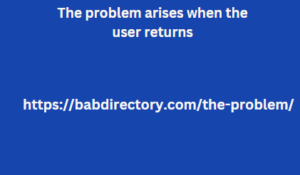In the dynamic world of data management, the concept of data persistence plays a crucial role in ensuring the longevity and integrity of information. Persistent databases, also known as durable databases, serve as the backbone of data persistence, safeguarding critical data from loss or corruption. This guide delves into the intricate world of persistent databases, empowering you to understand their significance, explore their diverse types, and harness their potential for secure and reliable data storage.
Understanding the Significance of Data Persistence and Persistent Databases
Data persistence holds immense value for individuals, organizations, and businesses:
Data Protection and Security: Persistent databases protect data from loss due to system crashes, power outages, or hardware failures.
Business Continuity and Disaster Recovery: Persistent data storage ensures business continuity by enabling recovery from disasters or disruptions.
Long-Term Data Retention and Archiving: Persistent The biggest downside however is the lack databases facilitate long-term data retention and archiving for historical records, compliance requirements, and future analysis.
Data Integrity and Consistency: by preventing unauthorized modifications or accidental deletions.
Data Sharing and Collaboration: Persistent databases enable data sharing and collaboration among users and applications.
Types of Persistent Databases
Persistent databases encompass a diverse range of technologies
Relational Databases (RDBMS): Structured data storage using tables, columns, and rows. Ideal for transactional applications and data analysis.
Object-Relational Databases (ORDBMS): Combines relational and object-oriented features, storing data in objects and supporting complex relationships.
NoSQL Databases: Non-relational databases designed for unstructured or semi-structured data, offering flexibility and scalability.
Cloud-Based Databases: Persistent databases hosted on cloud platforms, providing scalability, accessibility, and cost-efficiency.
Distributed Databases: Data distributed across multiple servers, enhancing performance and availability.
Considerations for Selecting and Utilizing Persistent Databases
When choosing a persistent database, consider the following factors:
Data Volume and Growth: Evaluate the volume of data you need to store and its anticipated growth rate.
Data Structure and Requirements: Assess the structure of your data, whether it’s structured, semi-structured, or unstructured.
Performance and Scalability: Consider the performance requirements and the need for scalability to accommodate future growth.
High Availability and Disaster Recovery: Evaluate the database’s ability to maintain high availability and support disaster recovery plans.
Security and Data Integrity: Ensure the database provides robust security measures and maintains data integrity.
Effective Strategies for Utilizing Persistent Databases
To effectively utilize persistent databases, follow these strategies:
Conclusion: Harnessing the Power of Persistent Databases for Secure and Reliable Data Storage
Persistent databases serve as the foundation for secure and reliable data storage, ensuring the longevity and integrity of information that is critical for Identifying and understanding the vast array individuals, organizations, and businesses. By understanding the significance of data persistence, exploring the diverse types of persistent databases available, carefully selecting and utilizing the appropriate database for your needs, and adopting effective data management practices, you can harness the power of persistent databases to safeguard your valuable data, ensure business continuity, and enable data-driven decision-making.






